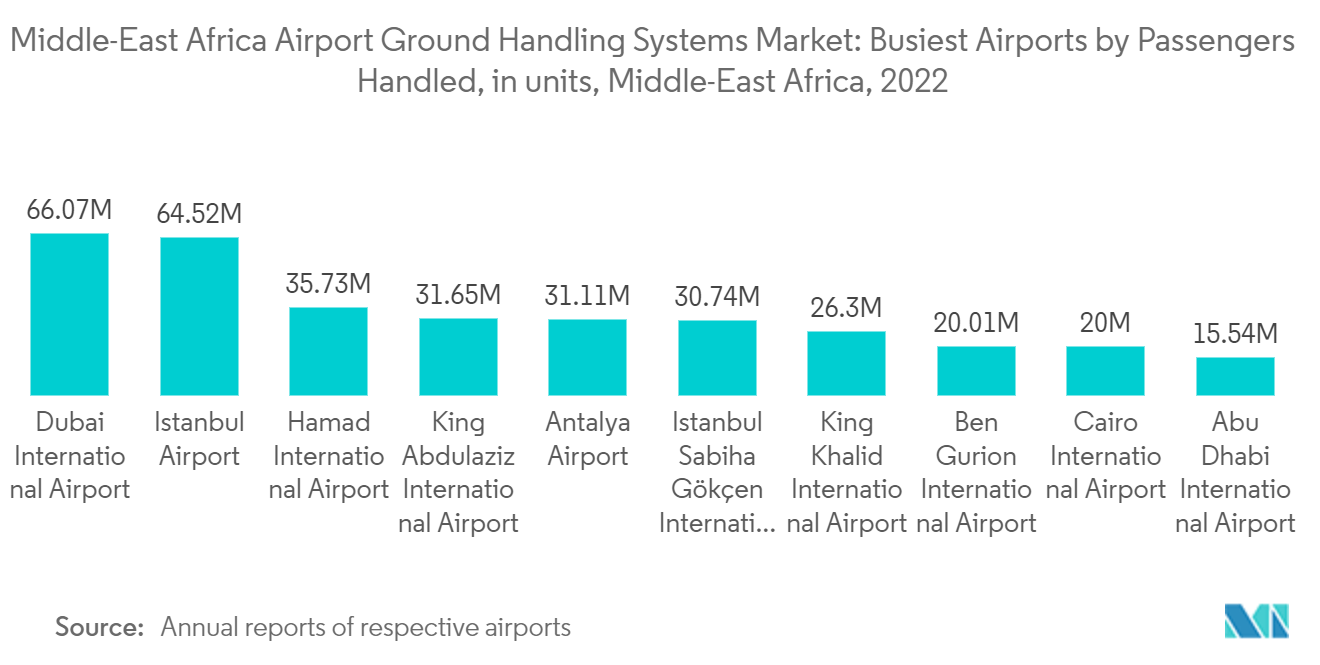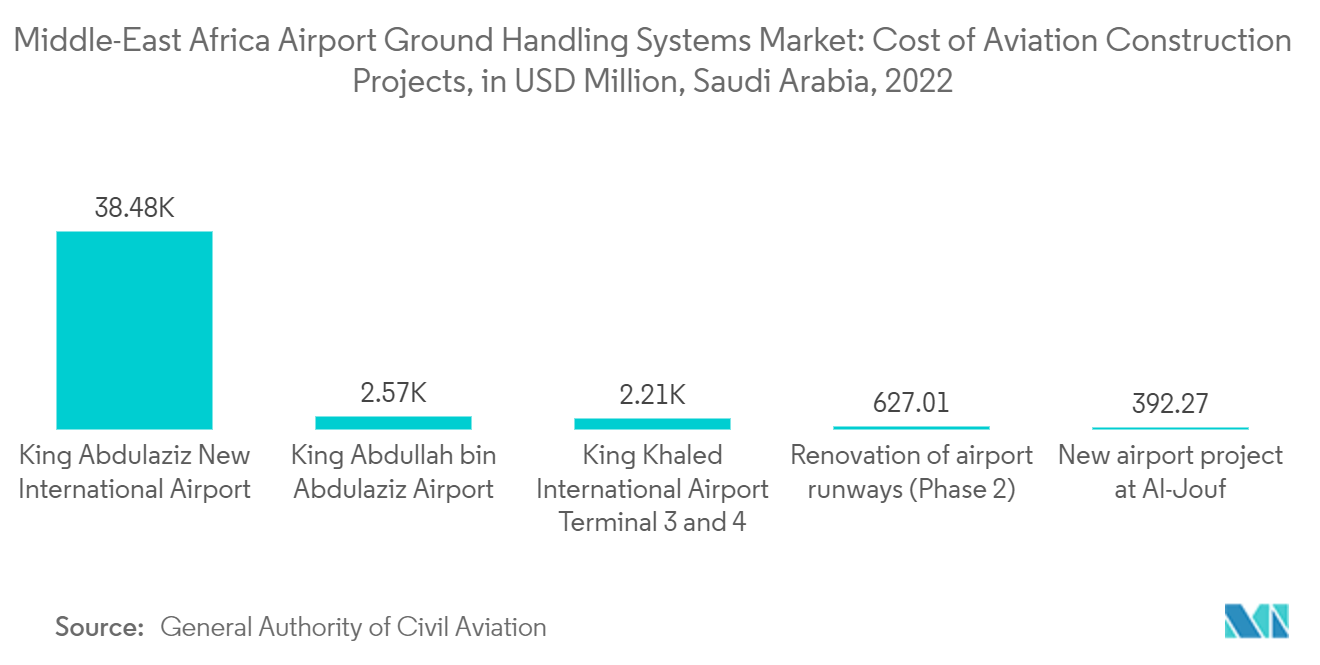Market Trends of Middle-East And Africa Airport Ground Handling Systems Industry
Passenger handling segment to grow registering the highest CAGR
The increase in passenger traffic increased pressure on airports and airlines to opt for advanced ground handling infrastructure that can enhance their ground operations and support their motive of reducing aircraft turnaround time. For instance, the Sharjah Airport in UAE recorded a 24.4 percent year-on-year surge in traffic to seven million passengers in the first half of 2023. The airport is embarking on a major expansion project aimed at increasing its passenger handling capacity to 20 million within a few years.
Correspondingly, airports are procuring an array of ground handling systems to facilitate the quick and smooth flow of passengers, baggage, and cargo, thereby increasing the efficiency of the airports. In Dubai International Airport, the ground handling service provider, dnata, replaced many of its ramp vehicles, GSEs, and forklifts with hybrid or electric alternatives that help extend life cycles, decrease engine emissions, and reduce waste. Such developments are expected to enhance the market prospects during the forecast period.

Saudi Arabia is Expected to Show Significant Growth in the Market
The growth in the demand for ground handling systems in Saudi Arabia can be attributed to the increasing passenger air traffic and growing spending on airport modernization programs. The Saudi Arabian government announced its ambitious plan to become a global transportation and logistics hub by 2030, aiming for more than 360 million annual passenger traffic. Saudi Arabia has 35 airports across the country, including six international and 29 domestic airports. King Abdulaziz International Airport in Jeddah, King Khaled International Airport in Riyadh, King Fahd International Airport in Ad Dammam, Prince Mohammad Bin Abdulaziz Airport in Medina, and Gassim Airport in Mulayda are the five busiest airports in Saudi Arabia.
In recent years, Saudi Arabia's aviation industry has significantly grown. In Q1 2022, Saudi Arabia recorded passenger traffic of 5.1 million, operated more than 40,000 flights, and registered an increase of 44% compared to Q1 2021. The increased passenger traffic is primarily attributed to the numerous entertainment and cultural events like Riyadh Season, which resulted in surging air traffic.
Saudi Arabia plans to host at least 300 million passengers and 5 million tons of freight by 2030. This leads to growing investment in airport infrastructure, new aircraft procurement contracts, and modernization of the existing aircraft fleets. In April 2023, Saudi Arabia announced that it plans to tender four new airport projects under the Public-Private Partnership (PPP) model as part of a bigger pipeline of 200 privatization and PPP projects across 17 sectors announced by the National Centre for Privatisation and PPP (NCP). Such developments will propel the growth of the market in Saudi Arabia.

